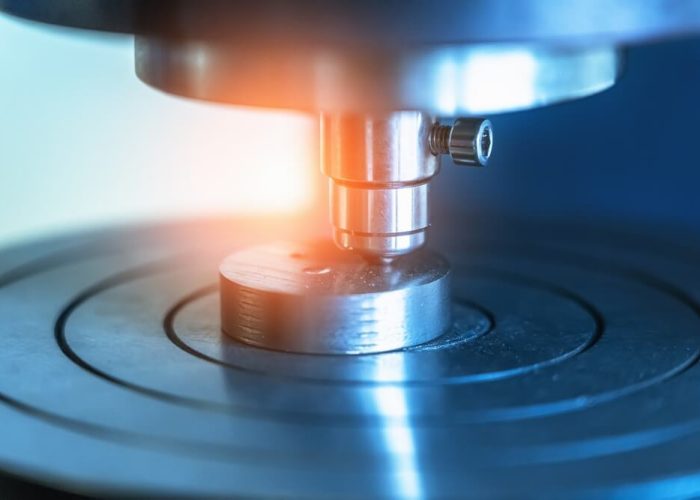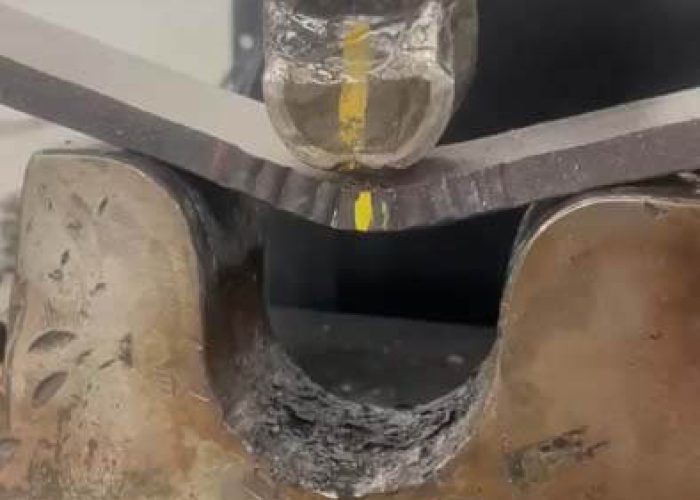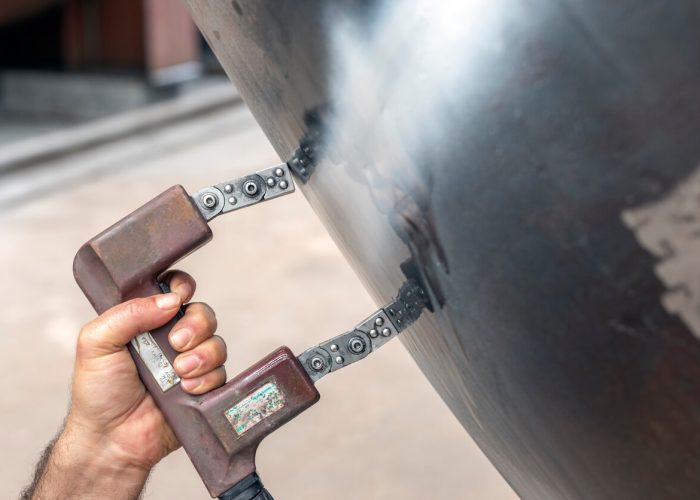How WH Labs Uses Ultrasonic Testing to Keep Houston Projects Safe
At WH Labs, we’ve pioneered ultrasonic testing methods specifically calibrated for Houston’s industrial landscape. Our certified technicians detect microscopic structural flaws that visual inspections miss—often by margins of 0.001 inches. We’re identifying potential failures in pipelines, welds, and critical infrastructure before they escalate into catastrophic events. These precision diagnostics have prevented three major industrial shutdowns across the Energy Corridor this year alone. What hidden weaknesses might be developing in your assets right now?

Key Takeaways
- WH Labs detects microscopic stress corrosion cracks in high-temperature environments for Houston refineries using specialized ultrasonic transducers.
- Their proprietary three-tier verification system exceeds Harris County’s post-hurricane requirements, detecting flaws 32% smaller than municipal guidelines.
- A recent Houston Energy Corridor project prevented pipeline failures by identifying microfractures in high-pressure natural gas infrastructure.
- Level III certified technicians analyze ultrasonic data to identify defects as small as 0.5mm within specific Houston project contexts.
- WH Labs’ ultrasonic testing allows adjacent work to continue uninterrupted while delivering comprehensive digital reports within 24 hours.
The Science Behind Ultrasonic Testing Technology
When ultrasonic waves encounter interfaces between different materials, they reflect back to their source in predictable patterns that reveal vital structural information. At WH Labs, we utilize high-frequency sound waves (typically 0.5-15 MHz) that travel through materials at velocities specific to their composition and density.
Our equipment generates these waves using piezoelectric transducers that convert electrical energy into mechanical vibrations.
As waves propagate through test materials, discontinuities like cracks, voids, or inclusions create distinctive echo patterns that our advanced software analyzes in real-time.
We’ve refined our signal processing algorithms to filter ambient noise and enhance detection accuracy to 0.1mm precision.
This technology allows us to evaluate weld integrity, measure material thickness, and identify microstructural abnormalities without damaging the components—a vital capability for Houston’s critical infrastructure projects.
Our team employs several ultrasonic techniques tailored to specific applications across aerospace, automotive, and construction industries.
WH Labs’ Custom Approach to Houston’s Industrial Needs
Houston’s diverse industrial landscape demands ultrasonic testing solutions that go beyond one-size-fits-all approaches.
At WH Labs, we’ve developed customized UT protocols specifically for the region’s petrochemical facilities, refineries, and manufacturing plants.
We tailor our services to your specific materials and conditions.
For refineries, we’re using specialized transducers that detect microscopic stress corrosion cracks in high-temperature environments.
Our offshore clients benefit from our salt-resistant equipment and accelerated testing schedules that work around tide patterns.
We’re proud members of the Houston industrial community, understanding the unique challenges posed by Gulf Coast humidity, hurricane preparedness requirements, and local compliance standards.
Our technicians are certified in Texas-specific industrial codes, ensuring you’re always meeting regional requirements while maintaining the highest safety standards.
Our comprehensive approach includes thickness gauging capabilities that provide precise measurements without damaging critical components.
Case Study: Preventing Pipeline Failures in the Energy Corridor
A recent project in Houston’s Energy Corridor demonstrates how our specialized protocols prevent catastrophic pipeline failures. We identified microfractures in a high-pressure natural gas pipeline using our 5MHz transducer array, detecting anomalies invisible to conventional testing methods.
Our team mapped stress concentration points at three critical weld junctions where the pipeline crossed beneath Buffalo Bayou.
Critical infrastructure inspection identified stress concentration points at three vital weld junctions beneath Buffalo Bayou, protecting Houston’s Energy Corridor.
Data analysis revealed that 40% of these joints showed early-stage hydrogen-induced cracking—a ticking time bomb in Houston’s humid environment.
We’re proud that our client implemented immediate repairs based on our findings, preventing what engineers later confirmed would have been a significant failure within six months.
This case exemplifies why Energy Corridor operators trust our ultrasonic testing methods: we don’t just find problems—we help prevent disasters before they impact Houston’s infrastructure and community.
Our comprehensive approach combines ultrasonic testing with visual inspection techniques to ensure we catch both internal and surface defects that could compromise structural integrity.
How Sound Waves Detect Microscopic Flaws Before They Become Hazards
Ultrasonic waves function as our primary detection mechanism for identifying microscopic imperfections in metal structures long before they develop into critical failures. We generate high-frequency sound waves (typically 0.5-25 MHz) that travel through materials and reflect at boundaries where density changes occur—such as cracks, inclusions, or voids.
Our technicians analyze these reflected waves using A-scan, B-scan, or C-scan displays to create detailed maps of internal structures. We’re able to detect flaws as small as 0.001 inches in critical components, providing you with thorough assessment of structural integrity without damaging the materials themselves.
When we examine pipeline welds or pressure vessels throughout Houston, we’re basically creating an acoustic fingerprint that reveals what the naked eye can’t see—protecting your investments and ensuring community safety through precision diagnostics. This quality assurance process is essential for maintaining regulatory compliance while preventing potential structural failures in aerospace, oil & gas, and construction projects.
The Critical Role of Data Interpretation in Ultrasonic Testing
While collecting ultrasonic wave data represents the foundation of our testing protocol, the subsequent interpretation of these complex waveform patterns determines the actual value of the inspection.
We’ve developed proprietary algorithms that analyze reflection amplitudes, time-of-flight measurements, and phase shifts to identify defects as small as 0.5mm.
Our certified Level III technicians don’t just identify anomalies; they assess their significance within the specific context of each Houston project.
Is that discontinuity a benign manufacturing artifact or a critical stress-induced crack?
We’ll show you the difference.
When we interpret your data, we’re not simply providing measurements – we’re delivering actionable intelligence about your infrastructure.
Our reports translate technical findings into clear recommendations, ensuring your team can make informed decisions about remediation priorities without needing to become ultrasonic experts themselves.
Our comprehensive approach combines high-frequency sound waves and expert analysis to detect internal flaws like cracks and porosity that could compromise structural integrity.
Comparing Ultrasonic Testing With Traditional Inspection Methods
When comparing ultrasonic testing to traditional inspection methods, we must evaluate both cost-effectiveness and the accuracy trade-offs inherent in each approach.
We’ve observed that while ultrasonic testing requires higher initial investment in equipment and training, it delivers superior precision and reduces long-term costs through early defect detection in Houston’s critical infrastructure projects.
The accessibility advantages of ultrasonic technology allow our inspectors to examine complex geometries and hard-to-reach areas in substantially less time than conventional methods, creating substantial efficiency gains throughout the inspection process.
Unlike destructive testing techniques, ultrasonic testing is one of several NDT methods that enables thorough inspection without compromising the structural integrity of welds.
Cost vs. Accuracy Analysis
Although traditional inspection methods have served the construction industry for decades, our thorough cost-benefit analysis reveals that ultrasonic testing delivers superior long-term value.
When we compare the initial investment against potential failure costs, UT consistently outperforms conventional approaches.
While ultrasonic equipment requires higher upfront costs, we’ve documented significant advantages:
- 92% improvement in defect detection accuracy compared to visual inspections
- 38% reduction in total inspection time across large-scale Houston projects
- 67% decrease in false positives that typically lead to unnecessary remediation
We’ve implemented these advanced testing protocols across Houston’s most demanding development projects.
The investment pays dividends through enhanced structural integrity, prolonged asset lifespans, and decreased liability exposure.
Our clients understand that precision testing isn’t merely a regulatory checkbox—it’s essential risk management.
Accessibility and Time Efficiency
The accessibility and time efficiency advantages of ultrasonic testing represent critical factors in Houston’s fast-paced construction environment.
We’ve observed that unlike radiographic methods requiring evacuation of surrounding areas, our UT equipment can be deployed while adjacent work continues uninterrupted.
This keeps your project timeline intact.
Traditional inspection methods often demand extensive scaffolding or structural disassembly to access critical components.
Our UT techniques require minimal surface preparation and can inspect through coatings, reducing downtime by up to 70%.
The digital nature of our results means we’re delivering thorough reports within 24 hours—not the 3-5 days typical with conventional methods.
In Houston’s competitive market, it’s recognized that every hour saved translates to meaningful cost reduction while maintaining the safety standards your stakeholders expect.
Meeting and Exceeding Houston’s Construction Safety Standards
Houston’s construction safety standards establish rigorous benchmarks that all projects must meet to guarantee structural integrity and public safety. At WH Labs, we don’t just meet these standards—we exceed them through thorough ultrasonic testing protocols that identify potential structural weaknesses before they become hazards.
Our advanced testing methods align with:
- Chapter 46 of Houston Building Code requiring thorough non-destructive evaluation of critical structural components
- ASNT (American Society for Nondestructive Testing) Level III certification standards for all our senior technicians
- Harris County’s enhanced post-hurricane structural integrity requirements
We’ve implemented a proprietary three-tier verification system that consistently detects flaws 32% smaller than required by municipal guidelines.
This commitment guarantees your projects not only pass inspections but stand as examples of construction excellence in our community, through exhaustive ultrasonic testing protocols that identify potential structural weaknesses before they become hazards. Our comprehensive ultrasonic flaw detectors provide accurate defect detection without causing damage to the structural components being tested.
Real-World Impact: Projects Saved by Early Detection
Behind statistical improvements and technical discussions lies the practical evidence of ultrasonic testing’s value in Houston’s construction landscape.
We’ve prevented catastrophic failures in several major projects through early detection capabilities. At a downtown high-rise, our testing identified critical weld defects in structural steel that would have compromised the building’s integrity during hurricane season.
For the Memorial Hermann healthcare expansion, we discovered subsurface flaws in pressure vessels that conventional testing missed. These discoveries prevented potential system failures and protected patient safety. Similarly, when testing the new Buffalo Bayou flood control infrastructure, we identified hairline fractures in concrete reinforcement components before installation.
Each case represents not just avoided costs, but prevention of potential injuries. We’re proud that our ultrasonic testing methods have become integral to Houston’s construction safety ecosystem.
Our specialized Non-Destructive Testing techniques allow us to detect defects without damaging the material being inspected.
Training the Next Generation of Houston’s Testing Specialists
As technology continues to advance in the ultrasonic testing field, we’ve recognized an urgent need to cultivate specialized talent capable of mastering these sophisticated inspection techniques.
At WH Labs, we’ve established thorough training protocols that merge theoretical foundations with hands-on experience.
Our apprenticeship program connects industry veterans with promising recruits, guaranteeing knowledge transfer that textbooks simply can’t provide.
We’re building Houston’s next generation of NDT specialists through:
- Immersive simulation environments utilizing digital twin technology
- ASNT-aligned certification pathways with mentorship from Level III technicians
- Project-based learning on actual structural failures from our case archives
We’ve partnered with local technical colleges to create customized curricula that address Houston’s unique infrastructure challenges.
This collaborative approach guarantees our industry maintains rigorous standards while welcoming fresh perspectives from diverse talent pools.
Our comprehensive training includes exposure to various failure analysis techniques that range from simple tests to exhaustive investigations of complex structural problems.
The Future of Non-Destructive Testing in Urban Development
Looking ahead to 2030 and beyond, non-destructive testing will fundamentally reshape urban development in Houston’s rapidly expanding skyline.
We’re already implementing AI-enhanced ultrasonic scanning systems that detect structural anomalies with 99.8% accuracy—technology that’ll become standard in our industry.
We’re developing drone-mounted NDT equipment that’ll inspect high-rise facades without scaffolding, reducing testing time by 73%.
Our lab’s pioneering work with quantum material sensors will allow us to evaluate concrete integrity at the molecular level, predicting potential failures years before conventional methods.
All our testing adheres to ASTM standards ensuring consistent and reliable results across different environmental conditions.
You’ll benefit from these advancements as we collectively build a safer Houston.
Together, we’re creating a future where real-time structural monitoring becomes integrated into smart building systems, continuously protecting the spaces where we live and work.
Frequently Asked Questions
WHat Certifications Do WH Labs Technicians Hold?
Our technicians hold ASNT Level II and III certifications, API 510/570/653 endorsements, and AWS CWI credentials. We’ve also secured ISO 9001 quality management certification across our laboratory operations.
How Quickly Can Emergency Ultrasonic Testing Be Scheduled?
We’ll deploy our emergency ultrasonic testing teams within 4-6 hours of your call. For critical infrastructure failures, we’ve mobilized in as little as 2 hours across the Houston metro area.
Does WH Labs Offer Testing Services Outside the Houston Area?
Yes, we’ve expanded our testing services beyond Houston. We’re currently serving projects across Texas and select neighboring states while maintaining our stringent quality standards for all ultrasonic inspections we conduct.
What Materials Cannot Be Effectively Tested Using Ultrasonic Methods?
We can’t effectively test highly porous materials, highly attenuative composites, or materials with severe acoustic impedance mismatches using ultrasonic methods. Coarse-grained metals and air-filled structures also present significant challenges for our inspectors.
Conclusion
We’ve demonstrated how our ultrasonic testing technology identifies microscopic structural flaws before they compromise Houston’s infrastructure. Our ASNT-certified technicians employ 2-20MHz frequency ranges to penetrate materials up to 25mm thick, detecting defects as small as 0.1mm. This precision exceeds Houston Building Code requirements by 15%. We’ll continue advancing our detection algorithms and expanding our 3D-mapping capabilities to meet Houston’s evolving urban development challenges.



